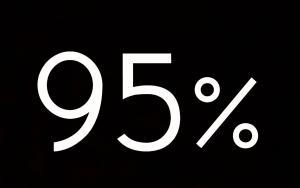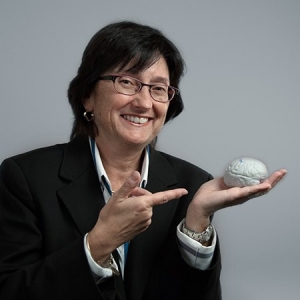Wondering how to get more opens and engagement, and create persuasive emails? Many marketers are – but those that joined Nancy Harhut, Chief Creative Officer at Wilde Agency and AMA Boston for a webinar on October 25th have many of the answers.
 In fact, science indicates that 95% of decisions occur in the sub-conscious, triggering “automatic” behavior that tells us who to trust and what to buy. Without these instinctive decision-making shortcuts, we would be overwhelmed by today’s onslaught of multi-channel communication.
In fact, science indicates that 95% of decisions occur in the sub-conscious, triggering “automatic” behavior that tells us who to trust and what to buy. Without these instinctive decision-making shortcuts, we would be overwhelmed by today’s onslaught of multi-channel communication.
Here are Nancy’s 6 secrets of persuasive emails, bolstered by research of higher response rates and a myriad of examples across fashion, travel, hospitality, politics, conventions and many other segments.
1. Eye Magnet Words for subject lines
Nancy started by noting the importance of the subject line and the sender in driving open rate, and the need to keep the subject line below 35 characters to be visible on mobile devices (64% of emails now done on mobile!). Magic words include the following- and be sure the front load these for maximum impact!
- Eye magnet words like New, Finally, Discover
- “Free” (not considered “spammy” anymore)
- Your own name – Personalization is always viewed positively by our sub-concious
- “Secret,” Inside Story,” “Behind the Scenes”
- “Alert” – help reader avoid pain
Takeaway > Front-load them in your subject line to draw attention
2. 2 ways to position a message for fast response
Principle of scarcity, which is based on urgency and exclusivity. Nancy used interesting examples of how urgency drives rapid response, such as a countdown clock or Taylor Swift limited-time offer. When these two factors are combined, as with a “Last Chance to Join Expedia Before the Public Launch,” you can create the key action step:
Takeaway > Make people feel special or time-pressed.
3. Ripple Effect on Consistency Principle
By getting people to say yes for a modest commitment, you take away their need to re-think their next, bigger decision. Make a “small Yes lead to a larger Yes” by starting with an open, then a survey, then a request for a gift. This action step:
Takeaway > Escalate your asks and remind people of your earlier asks.
4. Social Proof
Nancy explained that “we do what others do,” especially if they’re like us. Timely emails from the Clinton and Trump campaigns showed how both campaigns emphasized “how many people in your area have given- will you?” and “we’ve heard from X of your neighbors.” The longer the list of committed people, the more social proof and likelihood of that person joining the group. Action step:
Takeaway > Show the target that others have already done what they’re asking you to do.
5. How Availability Bias Turns Doubters into Buyers
Personal relevance affects people’s perceptions and decisions. When a buyer has just seen a storm come through a neighborhood, he or she is much more open to buying a solution she just saw in an ad, and people think a plane crash is much more likely than it is actually is. Action step:
Takeaway > Stir people’s memories or imaginations before asking them to respond.
6. The one thing to say to increase response
Social scientists found a simple answer – if you tell people “Why,” that “because” becomes a compliance trigger. It strips away objections, even in cases such as a test Nancy described in which the stated reason offered almost no significant information.
Takeaway > Legitimize your request with a reason
The fast-paced session ended with a lively Q+A, including the best way to use numbers in social proof (specific, odd, either 9 or 11, or even 12 but not 10); that most of these lessons apply to services and not just products; that testimonials are powerful, especially when the giver and receiver are similar, e.g. CEO to CEO, soccer mom to soccer mom, etc.
AMA Boston thanks Nancy for taking the time to share her valuable ideas and appreciates the many people who took time to participate!
About Nancy Harhut
 Nancy Harhut, Chief Creative Officer at Wilde Agency is passionate about the impact decision science can have on marketing. A BostInno “50 on Fire” marketing & advertising winner, a multiple ECHO Award recipient, and a 2016 Social Top 50 Email Marketing Leader, Nancy has directed campaigns for clients such as TripAdvisor, Dell, Nationwide, Reebok, Merrill Lynch and Boston Globe. She’s currently the Chief Creative Officer at Wilde Agency, a digital and direct firm specializing in the impact of decision science on marketing. A popular speaker, she’s addressed audiences from the US Department of Defense to Moscow marketers, and her speaking credits include the DMA, American Advertising Federation, Content Marketing Conference, FutureM and SXSW, among others. She and her teams have won over 175 awards for marketing effectiveness.
Nancy Harhut, Chief Creative Officer at Wilde Agency is passionate about the impact decision science can have on marketing. A BostInno “50 on Fire” marketing & advertising winner, a multiple ECHO Award recipient, and a 2016 Social Top 50 Email Marketing Leader, Nancy has directed campaigns for clients such as TripAdvisor, Dell, Nationwide, Reebok, Merrill Lynch and Boston Globe. She’s currently the Chief Creative Officer at Wilde Agency, a digital and direct firm specializing in the impact of decision science on marketing. A popular speaker, she’s addressed audiences from the US Department of Defense to Moscow marketers, and her speaking credits include the DMA, American Advertising Federation, Content Marketing Conference, FutureM and SXSW, among others. She and her teams have won over 175 awards for marketing effectiveness.